#undine is japanese
Text



I swim and I swim
into the depths of my mind
there I discovered
broken fragments of myself
I picked one by one
scattered pieces of my mind
like fixing a vase
poured glitter into those cracks
I became pretty
and more than anyone else
indestructible
and hungry for sick vengeance
what I really want
is the flesh of those bastards
who drowned and left me for dead
Chōka
長い歌
#poetry#poem#short poem#poems and poetry#japanese literature#english literature#literature#spilled thoughts#spilled words#spilled poetry#writblr#writerslife#writerscommunity#undine#mermaid#blue aesthetic#moon poetry#siren#revenge#Punk Panda Sentimentality
71 notes
·
View notes
Note
YESSS HELLO MICH MY FRIEND MICH FELLOW NAMARI ENJOYER 🤝💗
HI IZEL MY FRIEND IZEL AND FELLOW DWARF WOMAN APPRECIATOR!!!!!!!!!!
#ignorance cloud on#listen man i read the manga and i went dear jesus christ please help me when she showed up#SHES HOT!!!! WHAT CAN I SAY!!!!!#her japanese va is soooooooo good too oh my god. need the fuckin undine chaps to be animated already#also hi izel we havent talked in forever i miss u a bunch <3
2 notes
·
View notes
Text
Calendar of Auldrant
Though I do not know if other games in the Tales series go by a similar date and day naming system, this will primarily be Tales of the Abyss. This is a long post!
Here is all the information the game gives regarding the calendar.
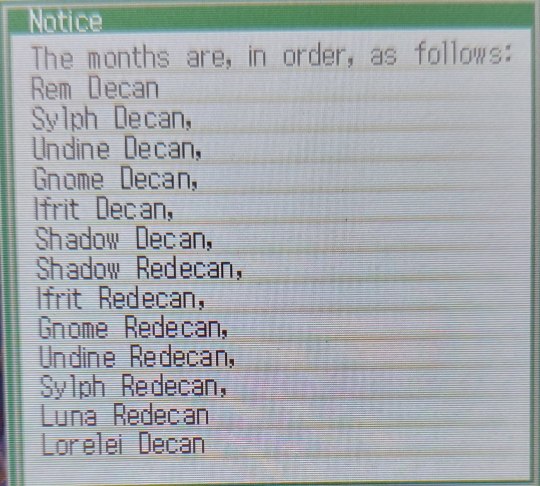

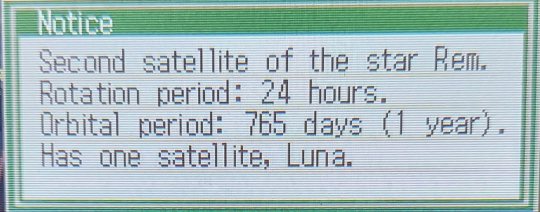
The Days:
This is a funny nod towards the origins behind the names of the days of the week. Rem is light and the “Sun” in Sunday is directly referencing the Sun. It's pretty neat that both reference a form of light.
Similar situation with Lunaday and Monday (Luna- Moon, Mon- also Moon).
Ifrit(also spelled Efreet) is Fire. Potentially in Korean the Tuesday equivalent translates to “fire day” according to Wiki about Tuesday. I don’t speak or read Korean so I also checked WordReference and found similar characters in some of the words like rage, wrath, ire, (further down that provided list) great fire. So it potentially could be a fun nod to that, can’t completely confirm.
Undineday is water day. In Japanese and Korean Wednesday also translates to Water Day. Yes, in WordReference the Japanese character used in Wednesday is used for water so this seems fairly straightforward. In Korean I also found a bit more difficulty as the characters are widely used in many words, there are some water-related words in the sea of words the character appears in so I wouldn’t completely dismiss the possibility.
Sylphday is wind. Thursday is a reference to Thor, the god of thunder. The wind would relate to stormy weather that thunder and lightning often appear with.
Loreleiday- Lorelei. Friday- the greatest day of the week. In Auldrant Lorelei is considered pretty great! Just kidding, well partially. Friday comes from Freya, the goddess of marriage and love. Lorelei is a godly figure in the world of Abyss. Though Lorelei may be caring, it’s more related to sound and memory. Daath in general is fairly religious, following Lorelei, with the Order of Lorelei. In Christianity, Good Friday is a widely celebrated day. In Catholicism, all Fridays during Lent, you can’t eat meat (but it is supposed to be all Fridays to abstain from meat not just Lent). This being Friday's equivalent does make sense with the more religious aspect of the day (since Sunday was used for the more straightforward “light” connection).
The Gnomeday-Saturday connection is fairly nonexistent. Gnome is the element earth in Auldrant. Saturday is a reference to Saturn (God of Time), sabbath day (for romantic languages), and bath day (Old Norse). I will be honest, none of these fit. Sadly, it may be a case of “just put it in somewhere.”
The Months:

There are 13 months in Auldrant. As far as I can tell, there is no official count of how many days are in each month.
If we ignore Lorelei Decan for a moment, the rest of the months go forward and reverse except for Rem Decan and Luna Redecan (which is in place of the counterpart of a potential Rem Redecan). The order of Rem, Sylph Undine, Gnome, Ifrit, and Shadow are not in the order of fonon numbers. The number order of this month list is 6, 3, 4, 2, 5, 1, 1, 5, 2, 4, 3, 6, 7. I am assuming Luna and Rem are two sides of the same coin and are referencing the same fonon so they are both the 6th fonon. There was close to being a pattern of taking a number, halving it, adding one, and halving it again but they ran out of whole numbers to continue that.
The first half of the year has the postfix Decan and the latter half Redecan except for the Lorelei month. This could be because Lorelei signifies that a new year will arrive, so it has the postfix Decan. Lorelei is an important figure in Auldrant, especially Daath, so a month that stands out in the name of Lorelei would be fitting.
To think of a wild interpretation of the months, it could represent a person’s life or the year’s lifespan. The beginning starts with the sun, a new beginning. The person/year goes through the experiences of their life, experiencing all it has to bring (with fonons making up the world). The center point of the person/year’s life is the Shadow months. At this point, they are no longer young and will have to figure out what to do for the rest of their life (a very shadowy midlife crisis). They reminisce about their life and go back to relive the experiences of their youth until the sun sets and the moon rises. The end of the line. Then as all 7th Fonists do, they return to the Fonbelt, to Lorelei. Then the cycle of fonons can begin again.
Or a more logical explanation of the months could represent the cycle the memory particles go through when traveling through the Fon Belt (The Planet Storm). Then to encompass all the Fonons Lorelei represents the final one of the 7th Fonon.
Anyway, all the months can comfortably fit 58 days in them but there is a remainder of 11 days to account for in the year. If we add a day for every other month starting with the first month, that would leave 4 days remaining. I do not know a logical placement for these days, so I will add them to Lorelei Decan. The month count would be Rem Decan- 59, Sylph Decan- 58, Undine Decan- 59, Gnome Decan- 58, Ifrit Decan- 59, Shadow Decan- 58, Shadow Redecan- 59, Ifrit Redecan- 58, Gnome Redecan- 59, Undine Redecan- 58, Sylph Redecan- 59, Luna Redecan- 58, Lorelei Decan- 63. (This will be helpful for some calculations later.)
The Year:
A year in Auldrant is 765 days. That is 2.1 times longer than our calendar year. If we compare that to our world, Jade would be 70, Guy 42, Natalia 36, Tear 32, and Anise 28. Dang does Jade look great at 70 haha! I do know the 765 days is a pun because that number sounds somewhat like Namco in Japanese. In this world, I assume people age at half the rate (My condolences to all the Auldrant parents with tantrum-throwing toddlers). Since the year is twice as long, Luke being locked in his Manor for seven years and the time skip in the story would be way longer than originally believed. Nothing like Auldrant continuing to be worse and worse, right?
Birthdays:
Can't have a ramble about a fictional calendar without talking about birthdays! From around the internet, the birthdays of the characters are listed as follows: Jade- Sylph-Redecan 22, Guy- Efreet-Decan 41, Natalia- Rem-decan 37, Luke- Lorelei-Decan 48, Tear- Lorelei-Decan 1, Anise- Shadow-Decan 46. Going along with my guess on how many days per month, the day each character is born in this: Jade- 607, Guy- 275, Natalia- 37, Luke- 750, Tear- 703, Anise- 339. (Basically, add up all the days of the months prior and add then the day of the month they were born). The birthdays I got from fan sites that supposedly got them from a QNA. I do not know the accuracy of these but for the purposes of the rest of this, these are the dates used.
I have noticed that there are assigned birthdays for the characters per our calendar year. Jade is Nov 22, and Luke is Dec 25th. I found these from fan sites and repeated them across the internet. Again with these, I do not know the accuracy, so I did my own take on the potential calculations.
There are a few ways to calculate the birthdays of these characters with our own: Divide the year by two (2.1 to be more accurate) and get an approximate answer, place our calendar year onto Abyss’, and count the days (for example there will be two Decembers).
The first option is easy. Divide the day they were born by 2.1 to get the day they would be born on Earth. It would land the characters birthdays like this: Jade- 289 (Oct 16), Guy- 130 (May 10), Natalia- 17 (Jan 17), Luke- 357 (Dec 23), Tear- 334 (Nov 30th), Anise- 161 (Jun 10). These are pretty close to the associated birthdays with Luke nearly being a Christmas Eve baby and Jade being born in fall.
The second option is also easy, for any character whose birthday is over 365, subtract 365 until it is a number below 365 and find the date associated (For example, if a character is born on the 366th day, they would be born on Jan 1st in our calendar). It would land the characters birthdays like this: Jade- 242 (Aug 30th), Guy- 275 (Oct 2nd), Natalia- 37 (Feb 6th), Luke- 20 (Jan 20), Tear- 338 (December 4th), and Anise- 339 (December 5th).
Despite the numbers not exactly lining up (there will be human error on my part with calculations and rounding), if people celebrate Jade's birthday on Nov 22 that's completely fine by me! It's a fictional birthday anyway! If it means more Tales of the Abyss art and content, Jade's birthday could be Feb 14 for all I care!
This was just something fun I've been thinking about when I learned about the calendar of Auldrant! And might as well try to put all my thoughts together for a big ramble. Hope you all enjoyed!
#tales of the abyss#rambles#birthdays#Why is the year 765 that's just so long#jade curtiss#luke fon fabre#tear grants#guy cecil#anise tatlin
86 notes
·
View notes
Text
One (Semi-obscure) Fact About Every Guilty Gear Character
I like trivia. And I like Guilty Gear. Being a series that’s been around for the better part of two decades, it’s only natural there’s some details that are less known about. So I wanted to make a silly little compilation about that, inspired by ‘One Obscure Fact About Every Total Drama Character’ by voiceunderthecovers on Youtube.
As the title suggests, I also specifically did my best to pull out facts that may be less known even to fans of the series, so ideally there’s no ‘Sol is based on Freddie Mercury’-tier stuff here. I tried to find something interesting for everyone!
Characters are listed in order of their first playable games
Missing Link
Sol Badguy- Sol was originally meant to be voiced by actor Koichi Yamadera rather than developer Daisuke Ishiwatari, but given the developer's budget at the time, he would have been too expensive to afford
Ky Kiske- While Ky has been consistently voiced by Takeshi Kusao for the entire series' run in Japanese, he has been given a different voice actor for every dubbed game for both the English and Korean versions. This means that Ky has had seven official voice actors in total, making him among the highest of the cast alongside Testament
May- May is one of only a few characters in the series to have a tattoo, and only one of two where it is not implied or indicated to be magical in some way, alongside Potemkin's barcode
Potemkin- Several of Potemkin's moves across games reference Hinduism. Strive's 'Garuda Impact' is named after a birdlike demigod that acts as a mount for Vishnu, while Xrd SIGN's 'Trishula' is named for a divine trident-like weapon wielded by the god Shiva
Chipp Zanuff- According to prototype and side materials, Chipp is 22 years old as of Missing Link.
Faust- Possibly to go along with his nature of being a doctor with the desire to treat anyone he comes across, Faust's blood type is O, the universal donor
Axl Low- Axl claims the specific date he desired to return to was May 14, 1998. This is the same date that Missing Link was released in Japan
Millia Rage- According to her Xrd SIGN story mode, Millia's favorite flower is the Easter Lily
Zato-1- Based on his abduction dialogue in Strive, Zato believes in aliens
Kliff Undersn- Despite being removed from the Wii version of XX Accent Core, along with Justice, both their names and endings remain in the game's code. They also both contain original art that had never been used up to that point
Testament- The twin demons that Testament summons in Strive are the same singular familiar they possessed in prior games, simply named ‘Succubus,’ possibly split into two entities similarly to Ramlethal's familiar Lucifero
Justice- In Missing Link, Justice was voiced by Arc System employee Takuya Morito, who also voiced Chipp
Baiken- Baiken was initially a difficult character to include in the series, as due to being an amputee, it brought up issues with compliance standards at the time
X
Anji Mito- one of his aliases, Hirasawa, was actually planned to be his name during the start of X's development
Venom- During the winpose where he spins his cue, it is able to interact with any remaining balls that are still set up nearby
Johnny- Johnny is implied to have a close history with Gig, the main antagonist of the DS spinoff game Guilty Gear Dust Strikers
Jam Kuradoberi- In Blazblue, Litchi Faye-Ling's theme 'Oriental Flower' is a remix of her X theme, 'Babel Nose'
Dizzy- In the Guilty Gear XX Burst Encyclopedia, full-bodied sketch concepts exist for her wing entities, Necro and Undine. It is unknown currently if the designs were ever meant to be implemented into the game or if they were simply unused concepts
XX
Bridget- Bridget’s usage of a yo-yo as a weapon was inspired by a world-class yo-yoer that Daisuke Ishiwatari knew during the development of XX
Slayer- In SIGN, Slayer is shown to be able to control his limbs even after being severed
Zappa- In his Accent Core character art, Zappa is drawn with six fingers on his right hand. This has never appeared before or since, and is likely just an error. However, in some circles, six fingered-hands are viewed as spiritually significant
I-no- Her main guitar weapon, 'Marlene,' closely resembles the real-life Starplayer TV model manufactured by German company Duesenberg. One of her design inspirations, Sheena Ringo, owned a similar guitar, which she referred to as 'Dietrich.' Collectively, both may be a reference to German actress Marlene Dietrich
Robo-Ky- In #Reload, Robo-Ky is unique in that he has two separate standard match themes, with a day version and a night version depending on what round is occurring
Overture
Sin Kiske- In all of his playable appearances, Sin has never been depicted wearing socks
Izuna- Despite often being assumed to be a kitsune due to his foxlike ears, it is implied through his story in the Overture Original Material Collection that Izuna is actually a tsukumogami made from a hairpin
Dr. Paradigm- Prior to Strive bringing back several actors from SIGN, Paradigm was the only character to have a consistent dub voice, retaining the same actor in SIGN that he did in Overture
Raven- The portraits used for his non-playable appearance in XX are traced from the illustrations used in the side novel Lightning the Argent
Xrd
Bedman- He shares his voice actor with the character Marth from the Fire Emblem series in both his original Japanese and English dub voices, Hikaru Midorikawa and Yuri Lowenthal respectively
Ramlethal Valentine- Ramlethal is the only Xrd Valentine to not be associated with a holiday
Elphelt Valentine- Elphelt is the only playable female character depicted wearing earrings. There are more playable men in Guilty Gear that wear them than women.
Leo Whitefang- The PS3 console version of Xrd SIGN contains unused prototype art for an alternative version of Leo's character portrait
Jack-O Valentine- Similarly to Elphelt and Ramlethal, Jack-O is mechanically unusual as a character, in her case due to her servant-summoning mechanic. It is often believed that this is a reference to the tower-defense style gameplay of Overture, where the original Valentine appeared.
Kum Haehyun- Haehyun only speaks with her own voice during her outro animation. All of her other dialogue is spoken through her mech
Answer- Possibly as a way of properly proportioning the third lens of his glasses, Answer's model contains a second nose above the first. This was left in place and simply made invisible rather than be removed in the final version
STRIVE
Nagoriyuki- Though he was teased in the very first trailer for Guilty Gear Strive at EVO 2019, he remained unnamed for almost a year until his official trailer was released along with Leo’s in July 2020
Giovanna- Despite it being her debut game, across the entire script of Strive's story mode, Giovanna only has 22 lines of spoken dialogue, totaling 157 words overall. For reference, Sol speaks more than that during his first 10 lines
Goldlewis Dickinson- Along with Bridget, Delilah, and the Valentines, Goldlewis is one of the few characters who canonically has a sibling
Happy Chaos- In Baiken's Strive DLC trailer, an error occurs near the beginning where during a brief pan along the character's name, a trait consistent along all of the Seaon 1 DLC trailers, it erroneously reads as 'Happy Chaos' rather than 'Baiken.' It is unknown how this mistake occurred or made it to the final version, though it was fixed by the next installment, as Testament's trailer lacks this error
Delilah- Her English voice actor, Jessica DiCicco, voiced another adolescent telekinetic, Franke Athens, in the cult classic game Psychonauts
That Man- With his full name being given as Asuka R. Kreutz, he is one of only two characters to be given a middle initial, alongside Bedman
#i spent way too much time on this#I'm not sure how I feel#I'm just hoping to god I didn't fuck up on a bunch of these#I tried to do my research#guilty gear#everyone#OP back on her bullshit
388 notes
·
View notes
Text
Mermaids and Mr Freud...
What do you think when you hear the word “mermaid”? Chances are, you’ll imagine a beautiful girl with a sparkling fish tail, naked breasts, flowing hair, gazing into a mirror: a scene straight out of early 20th-century Golden Age illustrators Arthur Rackham and Edmund Dulac. Or perhaps you see Ariel, Disney’s 1989 cartoon version of Hans Christian Andersen’s The Little Mermaid, with her cherry-red hair and purple shell bikini. That romanticized – and Disneyfied – picture of a mermaid seems fated to endure with this year’s live-action The Little Mermaid film (though the casting of Halle Bailey in the title role has prompted as much racist backlash as it has celebration. The mermaid of Andersen’s 1837 fairytale was white, say the purists.)
But Andersen himself drew on a far older, stranger, and more subversive folklore to write his story. His tale of a mermaid who, falling in love with a human prince, is forced to sacrifice her tail and her voice in order to become human, was deeply influenced by Undine, the 1811 novella by Friedrich de la Motte Fouqué, which in turn was inspired by the 16th-century occultist Paracelsus, who coined the word “undine” to describe an elemental water spirit who can only gain a soul by marrying a human. And mermaid legends, like so many other fairytales, have been shared in many parts of the world for millennia.
One of the earliest mermaid stories dates back to sometime around 1000 BC. In Assyrian mythology, the goddess Atargatis, who was venerated for thousands of years all over the Middle East, attains a half-fish, half-human form after throwing herself into a lake. The Yoruba spirit, Yemoja, who is represented as a mermaid, appears under other names as an ocean and river mother goddess – Yemaja, Yemanjá, Yemoyá, Yemayá – across half the world. Mami Wata – a water deity sometimes known as La Sirène - revered in Haiti and many parts of Africa, often appears as a mermaid, with a mirror that allows the passage from one plane of reality to another. And so it goes, from the ningyo of Japanese folklore to the sjókonar of Norse sagas. It is one of the most powerful archetypes in our shared dreaming.
Nor were mermaids always understood to be mythological. Throughout the Middle Ages and beyond, European bestiaries and illuminated manuscripts portrayed mermaids as real creatures. On several occasions fishermen have claimed to have caught them in their nets. Early explorers reported mermaid sightings – although it is more likely that they were dolphins, seals or manatees, mistaken for mermaids by sailors expecting to encounter exotic beasts on their journey. Since then, humans have stubbornly continued to look for proof that mermaids are real (so far, without success).
What does the mermaid mean? Why is the half-fish half-woman such a potent, enduring legend? At the heart of these stories is the question of women’s power. Fairy tales and folklore have played an important role in challenging societal roles and giving people opportunities to discuss difficult or taboo subjects through the safety of metaphor – in this case, through the image of a woman whose irresistible sexual power over men is balanced by her own inability to function sexually or to reproduce. And in the days when pregnancy and childbirth often proved fatal, that might not have been such a bad thing. The mermaid cannot be raped, or forced to give birth. Not being human, she is not bound by the conventions of human society or the laws of the Church. She enjoys both the freedom and the sensuality of her element without any of the attendant dangers or discomforts.
In folklore, the mermaid has independence, and can exercise sexual power over men, which makes her ultimately dangerous, unnatural: a monster. Perhaps this is why so many ancient myths and medieval bestiaries depict mermaids as untrustworthy, deceitful creatures, leading sailors to their doom. Their bodies are all sexual promise, but no sexual reward; and their voices are so enchanting as to drive men to madness. Unable to fulfil what some believe to be a woman’s biological destiny, they are often portrayed as soulless. Because a woman who uses without being used, who seduces without being seduced, who moves through water and air – whereas men are doomed to drown if they venture into the mermaid’s world – is a challenge to God, to the patriarchy, and to order itself.
In The Little Mermaid, Andersen tamed this older, more radical tradition. The moralism of his tale serves the dual purpose of mastering the mermaid – of making her fall victim to a human’s charms, rather than the more traditional way around – and taking away her power. The mermaid, made helpless by love of her prince, gives up her native element and the autonomy that comes with it, and exchanges it – via a witch’s spell – for a pair of feet, though walking causes her terrible pain. She also relinquishes the power of speech, which means that she is incapable of expressing her love in any way but the physical. And if her prince falls in love with someone else, then the mermaid is doomed to die on the instant, and to forfeit the soul for which she has sacrificed everything. Her entire being – her very existence – becomes dependent on the love and approval of her prince. Her independence, her challenge to the patriarchal status quo is gone. Though the ending of Andersen’s tale is – to a certain degree – redemptive (the mermaid, refusing to take the life of her prince in order to save her own life, is borne aloft by spirits of air and promised an eternal soul), it seems very cruel, especially as the heroine is only fifteen years old. A contemporary reader might well see in Andersen’s telling a warning to an emerging women’s movement – women’s power has often been seen as fragile, unnatural, and at the mercy of emotion.
Unlike the tragedy of Andersen’s mermaid and prince (and of Fouqué’s Undine), the 1989 Disney film rewards Ariel and Eric with a happily-ever-after ending. And it tells their story in a cheery, colourful palette (a stark contrast to Kay Nielsen’s original dark, eerie concept drawings for the film), which while being pleasingly child-friendly, also reduces the mermaid’s essential alienness, and minimizes her sacrifice, thereby making her tale into little more than a love story with a little added jeopardy.
But Disney also perpetuated other tropes. It is meaningful that the sea witch who provides the mermaid with the spell fits the older-woman archetype well represented in fairy tales: embittered by age, envious of the little mermaid’s youth and beauty. She is the one who demands the mermaid’s voice as payment for her services: a potent image of an older generation, silencing the voices of youth. (In Andersen’s telling, she too is the one who demands that the mermaid’s sisters cut off their hair in order to save their sibling.) The older woman is filled with rage and contempt for the younger woman; taking pleasure in their humiliation and the loss of their power. And as the tentacled Ursula in the Disney version, she is especially monstrous.
Over the centuries, fairy stories have always been reinvented to serve the needs of the changing times. And people have often fretted about this. (In 1853, Charles Dickens criticised the trend for rewriting fairytales to fit didactic, contemporary concerns.) But perhaps that the meaning of the mermaid has drifted further and further away from its origins in ancient folklore should not be cause for too much concern. Today, the mermaid has become the symbol of the trans community, whose members often feel the generational divide especially keenly. And there are endlessly imaginative ways to retell the tradition. (In 2008’s Ponyo, Hayao Miyazaki spins his tale of a goldfish who longs to be human into a charming meditation on childhood.)
Like the ever-evolving traditions of fairytales, magic, too, is transformative. In stories, magic acts as a metaphor for the change we seek to effect in our lives, in ourselves, in the world around us. Perhaps that is why fairy tales resonate so deeply with us. Why else would we cling to them, retell them in so many ways? They teach us not that magic exists, but that change is possible. They teach us not that dragons exist, but that monsters can be overcome. And they teach us to hope, in the face of a world that seems to be getting harsher and more confusing by the day, that sometimes love can save us, and that, even in the face of the cruellest kind of tyranny, we can still keep control of our fate, and hope for a happy ending –not just a Disney wedding, but something perhaps more satisfying. In films like Moana - or more recently Ruby Gillman, Teenage Kraken – the love story is with the sea; a story of claiming, rather than giving up power. Mermaids – in all their aspects – are still working their magic on us. And now, perhaps more than ever, it’s time to listen to their song.
80 notes
·
View notes
Text
Dungeon Meshi Anime Review, Season 1, Episode 7 review
Another great episode (Kabru!!! Kabru!!!)! Once more I have very little to say except that I liked it. Great animation, great music, great voice acting in both Japanese and English.
No weird anachronisms in the dub script, though I will say there were actually a few lines of dialog pertaining to the plot that were easier to understand in the Japanese subtitles, some nuance got lost in the dub but was clearer in the Japanese, and normally it's been the reverse until now.
A few more thoughts (and possible spoilers) under the cut:
I think they are being a BIT too faithful to the manga at points, they are leaving Laios' nose off and not finishing it a lot in this episode, which is something Kui did a LOT in the early manga and stopped doing later as she got more experience with drawing his character. There's no reason for the anime version's nose to just not get drawn except that they're trying to imitate the manga panels, which I think isn't necessarily great, since the earlier art just wasn't as good as the later art in my opinion.
The character designs in general have been averaged so that the designs overall look closer to Kui's end-of-manga style, so doing early manga style choices with only Laios looks weirdly out of place.
Obviously sometimes the nose is left off for comedic purposes, but it was happening in all kinds of shots in this episode, and it looked like the animators just didn't want to bother.
They cut out elements of Kabru's party's story in order to fit 3 chapters into this episode. Hopefully the missing parts will be included in the future episode when Kabru and his party return, and we'll get to see them interact, since most of the character development they get IN the story happens in those scenes.
If they just completely cut those scenes and don't include them later, it'll leave Kabru and his party really underdeveloped, as well as not telling anime viewers some worldbuilding stuff that would be really nice for them to know.
Though the animation and pacing was generally good, moving so quickly past Senshi's sadness over having to kill Anne felt like a disservice to that plot beat.
Also might have been nice to have a longer moment to focus on Senshi and Marcille bonding, though what they did was adequate.
The fight with the kraken was good, however, the nuance of "we can't attack the kraken because it's under the water and we are on top, and it can hit us from any direction but we can't hit it back" was sort of lost.
This made using waterwalk on the kraken seem to come a bit out of nowhere.
Also the kraken didn't really struggle or move after getting stuck on top of the water, which might have helped show that it wants to stay underwater and being up top like that was bad for it.
Other than that, a really solid episode.
Some predictions for upcoming episodes and adaptation choices:
Next episode will be the Falin flashback and the first undine fight
and then following episode the 2nd undine fight + tentacles
Then combine the frogs with the dragon planning. Maybe also the necromancy chapter? Or they put that at the beginning of the actual dragon fight episode...
OR
They just do the Falin flashback as fast as possible, and do all the parts of the undine together. So, that'd be 4 chapters in one.
#dungeon meshi#delicious in dungeon#dunmeshi#spoilers#dungeon meshi anime spoilers#dungeon meshi spoilers#review#theories
25 notes
·
View notes
Text
Let’s turn up the heat because I’m going over the real-life inspirations for all the fire-type starter Pokémon. Here are the links for when I covered the inspirations for all grass starters, all fish, and all non-fish aquatic Pokémon.
Gen I gives us quite possibly the most iconic starter line: the Charmander line. Interviews with the design team have revealed that Charizard was the first of the line to be designed and the other two were designed by working backwards from it. Both Charmander’s English and Japanese name (Hitokage) reference the mythical salamander of European folklore. Salamanders have been associated with fire in multiple cultural folklores throughout Europe, often to the point where their depictions have nothing to do with the actual amphibians. Interestingly, the oldest accounts that associate salamanders with fire comes from Pliny the Elder, who repeated an account their bodies were so cold they could extinguish fires. Somewhere along the line of legends being passed down, salamanders got flipped from repelling fire to living in it, possibly as a result of getting conflated with other mythical reptilians like dragons or basilisks. In the renaissance, the alchemist Paracelsus described salamanders as fire elementals, along with a group of other elemental beings (gnomes for earth, sylphs of air, and undines of water).

(image: an artistic depiction of a fiery salamander. Art by Michael Maier)
In addition to salamanders, Charmander and Charmeleon are given the upright poses and dragging tails of outdated reconstructions of theropod dinosaurs. Charizard is a classic depiction of a western dragon: a winged reptile that breathes fire. Western dragons are based heavily on lizards, with some of the earliest depictions being a dead ringer for monitor lizards. Charizard is said to love fighting, which is reminiscent of how western dragons have been depicted as dangerous, destructive, and even demonic monsters. It is only relatively recently that western dragons have been depicted as anything but evil. Charizard doesn’t have the dragon type (unless it mega evolves to X form), but that’s more because back in gen I, dragon was intended to be the special type exclusive to the late-game powerhouses that are the Dratini line. Charizards mega evolutions and gigantamax form don’t really add much to the origin, they’re just exaggerations of Charizard.

(image: art of a western dragon by Friedrich Justin Bertuch)
Cyndaquil is based on an echidna, an Australian monotreme (egg-laying mammal) that has a long snout and quills like a porcupine.
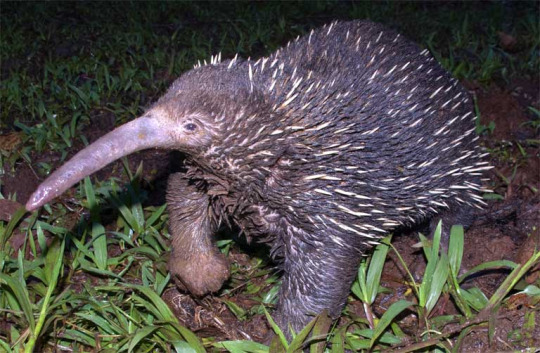
(image: a long-beaked echidna. I don't know why, but its snout makes me very uncomfortable)
Despite being an echidna, its species name is the Fire Mouse Pokémon. This is actually a hint to an additional inspiration for its origin. The Japanese word that got translated to “Fire Mouse” is “Hinezumi”. This is the Japanese name for a monster originating in Chinese legend called the “huǒshǔ”. It’s a flaming mouse that lives in volcanoes. The flaming mammal and volcano association continues through the line. Also, when I googled “hinezumi” the first thing that popped up was the Monster Girl Encyclopedia. If you know, you know (don’t google it). Quilava and Typhlosion completely drop the echidna inspiration, which is a bit disappointing to me. That’s why I made regional variants of them for my Australia/New Zealand fakemon region where they stay as echidnas. While being based on badgers, they retain the quills that are found in many animals, most famously porcupines and hedgehogs. Hisuian Typhlosion is based on Kamuy-huci, the Ainu goddess of the hearth. The Ainu are the indigenous people of Hokkaido, the island that inspired Sinnoh and Hisui. There are multiple Ainu references in Hisui’s design, plot, and regional variants. In the Ainu religion, the hearth was the connection between Earth and the world of spirits and was therefore never allowed to go out. It could also be used to communicate with the kamuy (gods and spirits) and was the passage through which the souls of the dead would leave the world and eventually return for reincarnation. This is why Hisuian Typhlosion is part ghost-type. The fire around H Typhlosion’s neck looks like magatama beads, which are used in the spiritual practices of multiple belief systems. These flames can release 108 ghost lights. 108 is an important number in Buddhism and is the number of beads in a Japamala, another type of beaded necklace used for spiritual practices in (among other religions) certain types of Buddhism.

(image: a japamala with wood beads)
The Torchic line is, I suspect, the place where the trend of basing fire starters on Chinese zodiac animals started. Typhlosion really doesn’t fit the zodiac, though some people say it’s supposed to be the mouse. The line is based on chickens. More specifically, they are based on the basan, a legendary fire-breathing chicken.
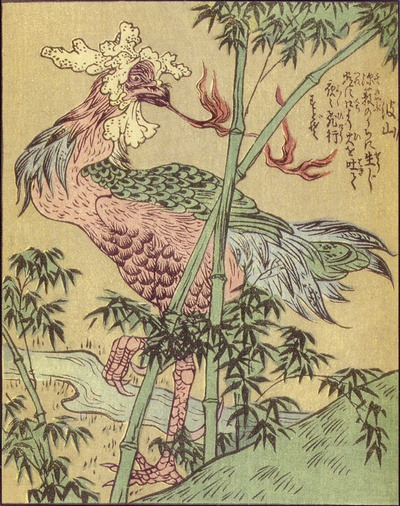
(image: art of a basan by Takehara Shunsen)
Torchic is a chick, a hatchling chicken. It being bright orange comes from a tradition of dying chicks bright colors to be sold at festivals. Male Torchics have a tiny black spot on their rear ends that females don’t. This is probably based on vent sexing, a technique for determining the sex of chocks, a notoriously difficult task. It is done by examining the cloaca, looking for a bump that usually only males have. Combusken and Blaziken are based on cockfighting, a form of animal abuse where people force chickens to fight and bet on the winners. The official art for Blaziken’s normal and mega evolved forms have it in poses used in the martial art of Muay Thai. Blaziken is usually depicted as fighting primarily with kicks and Muay Thai emphasizes kicking. Blaziken being an humanoid with a bird head may also reference the bird-headed Egyptian gods Horus and Ra, or off of the karura, a diving being that looks like a human with a bird’s head in Japanese mythology.
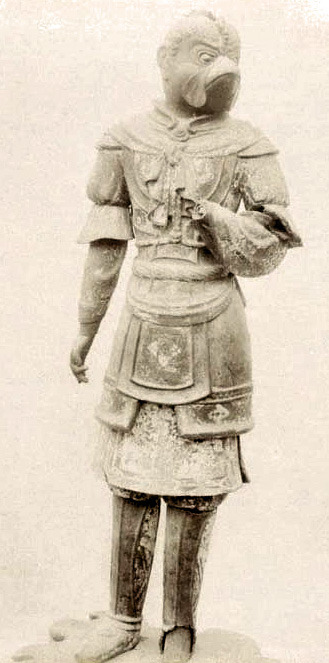
(image: a statue of a karura)
The Chimchar line are based on the monkey from the zodiac. Chimchar’s species name is the Chimp Pokémon, and it does bare some resemblance to a young chimpanzee. When Chimchar’s flame goes out, you can see prominent red marking on its butt. Several monkey species have marking on their hindquarters, but the most famous by far is the baboon. Chimchar’s lack of a tail identifies it as an ape, but its evolved from gain tails, making them monkeys. A lot of people think that apes are separate from monkeys, but really apes are a subset of old-world monkeys. Apes are monkeys, you are an ape, therefore you are a monkey and that’s nothing to be ashamed of. Monferno and Infernape both have prominent facial markings heavily reminiscent of those of mandrills.

(image: a male mandrill's face)
Monferno having blue facial marking and orange fur also makes it look like a golden snub-nosed monkey.
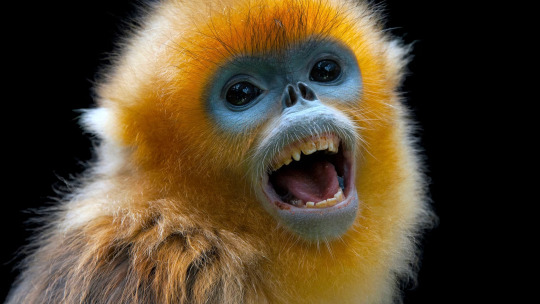
(Image: a golden snub-nosed monkey's face)
These are native to China and the line does have some heavy Chinese influence. The martial art that Monferno and Infernape use is most likely Monkey Kung Fu or Hóu Quán, which was inspired by the movements of monkeys. Infernape is based on the character of Son Goku, the Japanese name for the character Sun Wukong from the Chinese epic novel Journey to the West. Sun Wukong is the king of all monkeys, a martial artist, and has several magic powers.
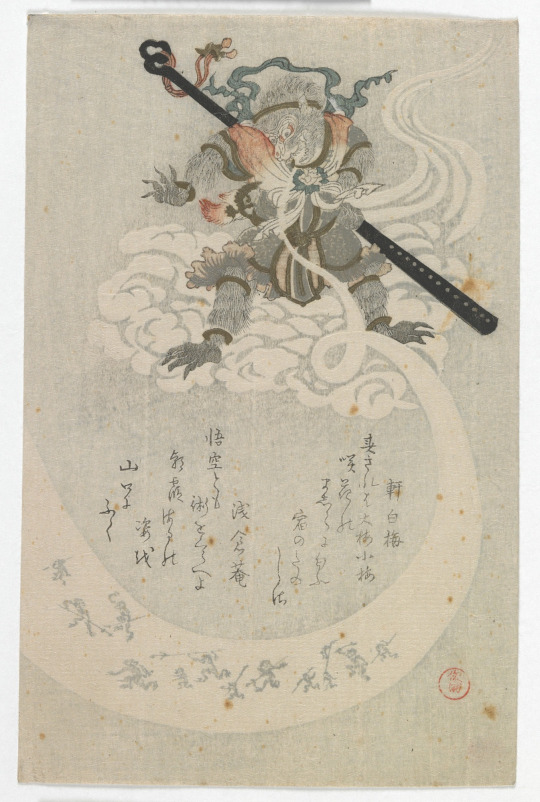
(image: Japanse art of Son Goku/Sun Wukong. Art by Shunman Kubo)
Sun Wukong may be based on the older Hindu god Hanuman, a monkey-like god associated with strength and heroism who was also a member of the varana, a species of monkey people.

(image: a sculpture of Hanuman)
The Tepig line are based on the boar of the zodiac. Ken Sugimori said that the Unova starters were based on different cultures to reflect Unova being a very diverse place. The Tepig line were given Chinese design elements whole the Snivy line were “western” and the Oshawott line were Japanese. Tepig having a dark marking on its head and rear but being light everywhere else comes from the markings of the British Saddleback pig breed.

(image: a British saddleback pig)
The fire and pig combination references how pigs are bad at regulating their body head and need to use external sources like mud to cool off. Pignite takes on more boar traits with its exposed tusks. The markings on its body look like it is dressed in a wrestling singlet, which fits as both Pignite and Emboar are based on wrestlers. The yellow markings on Pignite and Emboar resemble patters found in ancient Chinese cauldrons called dings.
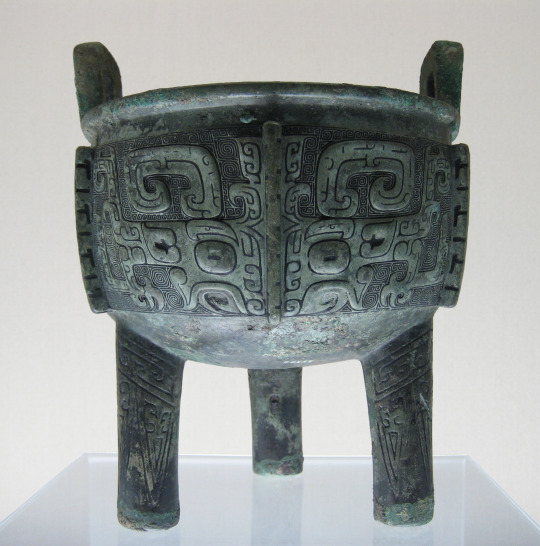
(image: a ding)
Ken Sugimori also stated Emboar was inspired by the character Zhang Fei in the Chinese novel Romance of the Three Kingdoms. In the story, Zhang Fei is betrayed and decapitated by his own men. This could be the purpose of the fire scarf Emboar has, to separate its head from its body. Pignte and Emboar also draw from another Chinese story, the afore-mentioned Journey to the West, specifically the character of Zhu Baije. Zhu Baije is a pig man who joins the titular journey. He is also jealous of Sun Wukong, which kind of fits with how Emboar is a much worse Pokémon than Infernape.
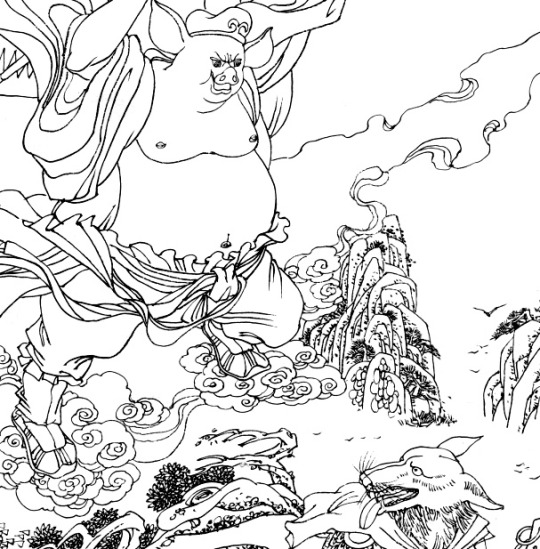
(image: an artists depiction of Zhu Baije. Unknown artist)
The Fennekin like take the place of the fox in the zodiac. Design-wise, their large ears mark them as being based on fennec foxes. They are also based off of the kitsune, magical foxes in Japanese mythology. Among the many powers attributed to kitsune were the ability to breathe fire and perform magic. Kitsune could also take on the form of human women, which is referenced in Fennekin’s evolutions becoming humanoid and having feminine designs.
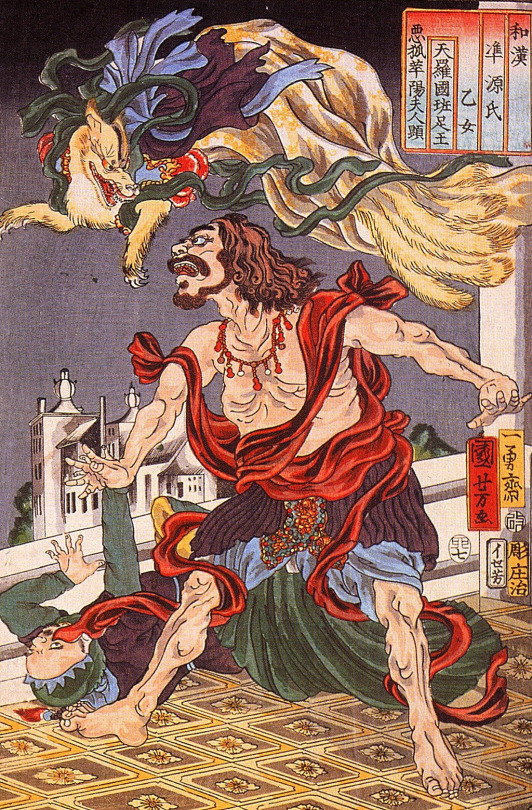
(image: art of a Kitsune scaring two people by Utagawa Kuniyoshi)
Human could also learn magic form foxes, becoming fox witches or kitsune-mochi/kitsune-tsukai. Braixen and Delphox take quite a bit of their design from these fox witches, they also draw from the classic wester witch, using magic wands and Braixen having a tail that looks like the head of a flying broomstick. The association of witches with fire might be a reference to witch burnings. Delphox is also based on a prophet or seer, with its ability to see the future. Delphox’s English name directly references the ancient Greek oracle at Delphi. The final forms of the Kalos starters are based on the fantasy character archetypes of the fighter, the mage, and the thief. Delphox is very much the mage.
Litten is a black cat with tabby cat features. Tabby cats are defined by the stripes on their faces and legs. The orange and black stripes also identify it as the tiger from the zodiac. Its eyes plus forehead stripes are a dead ringer for the alchemical symbol for brimstone, another name for sulfur. Sulfur is a highly flammable element, fitting the fire type. This is one of several references to alchemy found in gen VII.

(image: the alchemical symbol for brimstone. two horizontal lines crossed by a vertical line that leads down into an infinity symbol)
Torracat doesn’t change much from Litten, just adding more stripes and a fireball that looks like a bell on a cat’s collar. It does change when it evolves to Incineroar, and not for the better. Incineroar is my least favorite final stage starter and easily in my top 10 most hated Pokémon. I could go on for a while about how much I hate it, but this isn’t the post for that. It’s still a tiger, but now it has been combined with a professional wrestler. You can tell they really wanted to do another fire/fighting type but knew there would be backlash. The belt of fire is based on a championship belt and its dark type comes from being a heel. In wrestling language, a heel is a villainous character, someone the audience is supposed to boo (a face is a heroic character). This fits with Incineroar being describes as a violent and egotistical Pokémon. However, Incineroar does have a soft side. This fits with how wrestlers are performers playing characters. A performer playing a heel character may cheat, lie, steal, and generally be an asshole while in character, but when not in character they probably won’t be nearly as unpleasant a person.
Scorbunny is the rabbit of the zodiac. More specifically, it is a white rabbit and like with real rabbits, its feet are considered good luck charms. The yellow patch on its face comes from a Japanese character design trope where a bandage over the nose is supposed to indicate that the character is tough and rambunctious. Maylene from the Sinnoh games shares this design element. Its fire typing could come from the Jataka tales, a collection of Buddhist stories from India. In tale 316, a rabbit is placed in a fire as a burnt offering, but it is unharmed by the flame. Another connection could come from the fact that rabbits have unusually high body temperatures for mammals. If Scorbunny is cheerful child, Raboot is a moody teenager. It’s fur and the stripe on its head look like a tracksuit and headband, giving it a connection to athletics. This continues with Cinderace, who is now an association football (or soccer to Americans) player. Football is a huge deal in England, the basis for Galar. Its fur looks like athlete’s attire and it uses a flaming berry like a football. This is another one where you can tell they wanted to make another fire/fighting type.
The Fuecoco line ditched the zodiac theme to become a crocodile. Its upright posture makes it look like a chibified theropod dinosaur and its silhouette looks like a chili pepper. The white face of both Fuecoco and Crocalor resembles a calavera, skull imagery used in the Mexican Day of the Dead. This is a Mexican holiday which is a celebration of dead loved ones that is typically very spirited and cheerful as opposed to glum and mournful. Folklore says the ghost will return to the world of the living on the Day of the Dead. While Paldea is based on Spain and Portugal, several of the new Pokémon have designs based on elements from central and south America, possibly because of both countries’ history of colonialism in those areas. Crocalor adds several references to mariachi players. The flaming nest and egg on its head is a sombrero while the markings on its abdomen look like a traje cordobés, a type of vest often used in mariachi.

(image: a mariachi band wearing wests and sombreros)
The hat combined with the calavera face makes it look like La Calavera Catrina, a skeleton wearing a wide-brimmed hat that is used as a common symbol in the Day of the Dead.
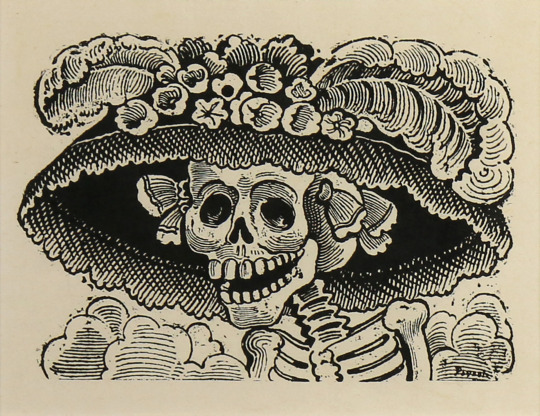
(image: art of La Calavera Catriana by José Guadalupe Posado)
It could also be a bouquet of Tagetes erects, the Mexican marigold, a flow also used for the Day of the Dead. Skeledirge continues the mariachi and Day of the Dead theme by becoming an undead singing crocodile. Real crocodiles will vocalize during mating and nesting season. There are several stories of ghostly or monstrous crocodiles in Spanish folklore, such as the Cocollona and the Drac de Na Coca, the latter of which is displayed as a taxidermied specimen in a museum in the city of Palma de Mallorca. There is also the Coco or Cuca, a boogieman-like that originated in Spain and Portugal and spread to the Americas that is often depicted as a monstrous crocodile. All three of the Paldea starters are based on entertainers and Skeledirge is based on a singer. Given its typing and English name, it probably single funeral dirges. The fiery bird on its nose could come from the gharial, another type of crocodilian. Male gharials have large bumps on the tips of their snouts in the same spot the bird sits.
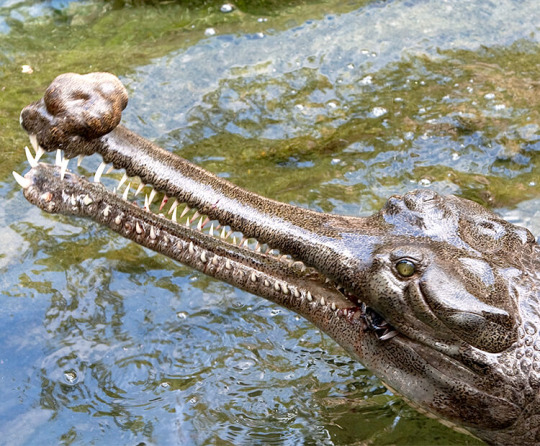
(image: a male gharial)
Another, possibly more likely source is the Egyptian plover, a bird that will land on top of Nile crocodiles and eat parasites off of their skin. Skeledirge could also be based off of alebrijes, very colorful statues of mythical creatures in Mexican folk art. This is making me think about how cool a Mexico-based region could be.
#pokemon#pokemon origins#pokemon lore#fire type#fire starter#charmander#cyndaquil#torchic#chimchar#tepig#fennekin#litten#scorbunny#fuecoco#charizard#typhlosion#hisuian typhlosion#blaziken#infernape#emboar#delphox#incineroar#cinderace#skeledirge
37 notes
·
View notes
Text
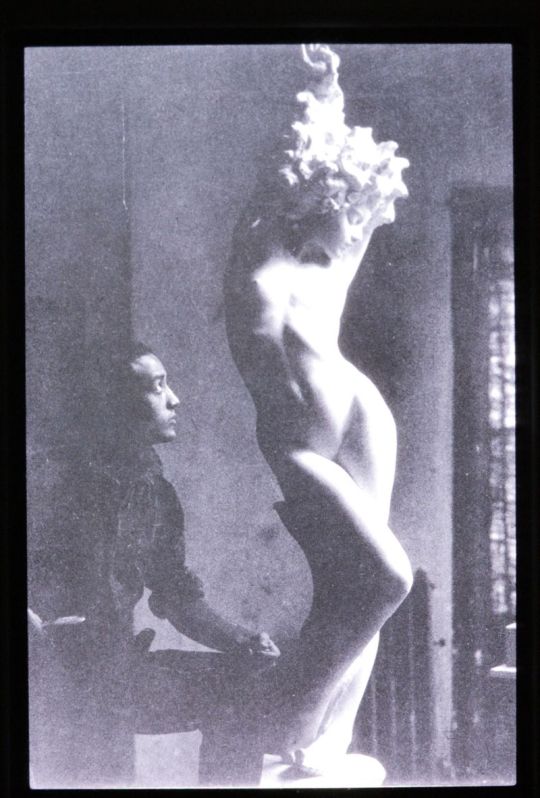
Happy Birthday to Isamu Noguchi who was born on this day in 1904.
Isamu Noguchi (1904–1988) was one of the twentieth century’s most important and critically acclaimed sculptors. He created sculptures, gardens, furniture and lighting designs, ceramics, architecture, landscapes, and set designs with his own unique style of bold and modern aesthetics.
Noguchi was born in Los Angeles to Léonie Gilmour, a white American of mostly Irish descent born in Brooklyn, NY, and Yonejiro Noguchi, an influential Japanese writer of poetry, fiction, essays, and literary criticism in both English and Japanese. Noguchi moved to Japan with his mother at the age of two and lived there until the age of thirteen. In 1918, he returned alone to the United States to attend high school in Indiana. After high school, he moved to Connecticut and then to New York City to attend Columbia University, enrolling there as a premed student. He began taking evening sculpture classes at the Leonardo da Vinci School on the Lower East Side, and soon left the university to become a sculptor, supporting himself by making traditional portrait busts.
In 1926, Noguchi saw Constantin Brancusi’s work in an exhibition in New York. In 1927, he received a Guggenheim Fellowship and went to Paris to work in Brancusi’s studio. This experience profoundly changed his artistic direction, turning Noguchi toward modernism and abstraction.
This photo of the artist is from circa 1926 before he left for Paris. It shows the young artist looking at his work, which depicts a female nude in a traditional way. This work was later destroyed.
During the WWII, Noguchi became a political activist and co-founded Nisei Writers and Artists Mobilization for Democracy. He voluntarily entered the Poston concentration camp in Arizona and remained there for six months. (Summarized from Noguchi.org website)
Undine [destroyed]
Noguchi, Isamu, 1904-1988, American [artist]
American
1926
HOLLIS number: olvwork240109
Image title: Photo with artist [ca.1926]
This image is part of FAL’s Digital Images and Slides Collection (DISC), a collection of images digitized from secondary sources for use in teaching and learning. FAL does not own the original artworks represented in this collection, but you can find more information at HOLLIS Images.
#IsamuNoguchi#ArtistsBirthday#BOTD#Bornonthisday#Birthday#HappyBirthday#Americanartist#JapaneseAmericanartist#Sculptor#Digitalcollection#Sculpture#Photography#HarvardFineArtsLibrary#Fineartslibrary#Harvard#HarvardLibrary#harvardfineartslibrary#fineartslibrary#harvard#harvard library#harvardfineartslib#harvardlibrary#photography
36 notes
·
View notes
Note
*kicking my feet in the air like a kid*
Hi Undine!! It's Aiko anon, chiming in for Sleepover Sunday 😚 What would you say are your top three favorite words, in any language?
Aiko anon hello!!!!! I've missed you so much, and I hope that you are doing fan-freaking-tastic.
This is such a difficult question! I was definitely stumped but I think I came up with a list of current favorites.
Ardent — Probably a byproduct of me reading/writing/watching so much historical romance but man it's such a gorgeous word. "I love you most ardently" is absolutely killer in Pride and Prejudice. It's so difficult to actually weave into writing, but I've been writing some historical romance letters as a bonus fun content for myself and it felt amazing to finally be able to use it.
ドキドキ (doki-doki) — Japanese onomatopoeia is next level and is hands-down the most concise and descriptive way to describ something. I write a lot of romance so doki dokis are plentiful, but are impossible to describe as nicely and concisely and perfectly in English. It's not just doki-doki either, any other Japanese onomatopoeia like ワクワク(waku-waku) モグモグ (mogu-mogu) ごにょごにょ (gonyo-gonyo) so on and so forth are all insanely descriptive and wonderful.
Vestige — Familiar to my longtime followers as the placeholder title to one of my WIPs, Project Vestige. Not only does this word perfectly encapsulate the themes of my actual project, I find this word so hauntingly beautiful. Defined as "a trace of something that is disappearing or no longer exists", it's a word that makes me nostalgic for something that I never actually experienced.
Thanks for this thought provoking question Aiko, I really enjoyed it!
23 notes
·
View notes
Note
VEDIKA HAS TELEPEATHY
yeah! the author chose the names very carefully! of what I know, undine is a latin name relating to water, kokoro is a japanese name relating to hearts, and vedika has its roots in sanskrit and relates to something like consciousness or knowledge
23 notes
·
View notes
Text
Bionicle Folktales I’ll Possibly Do
Hey, to any Bionicle fans out there, I’ve been having an odd idea lately. It’s not exactly a fanfiction, but I have thoughts about making six or so different little folk tales/fairy tales of the Bionicles, being a Matoran, Toa, or Turaga, encounters different types of fairies/ mythical creatures, depending on their respective element or region. I don’t mean the little people with wings, either; I mean the older kind, otherworldly, scary humanoid beings from old European folklore who you don’t want to upset or mess with.
It’s a blurry idea in my head, but an idea that’s stuck in my mind for some time.
My first idea that came to mind was the Onu-Matorans. Being that they live underground, under mountains, in caves, and their village is under a mountain, easily what came to mind are the underground folk of Scandendavia. This includes dwarves, dark elves, the huldra/skogsra, the nisse, trolls, and the tusser. But the one I think of most is the gnome. Not like the nisse or garden gnome, but an elemental, spirits of the earth, an ugly little humanoid creature who can walk through earth and rock as if they were air, is rarely seen by humans, and is said to be deceptive, cunning, and evil. It makes me wonder how long an Onu-Matoran like Onepu, Taipu, or Nepuru, or Onua or Whenua would encounter such a being. Maybe Onepu or Taipu could be digging in a particularly or unusually deep part of the mines of Onu-Koro or exploring a remoter part of the caves, when suddenly, out of the earth walks the ugliest little thing they’d ever seen, and certainly not a Rahi. And then the gnome may do something bad to the Matoran/Toa/Turaga.
My second idea involves the Ga-Matorans, which has some easiness since all the Ga-Matoran who ever were are all female, and there are so many water spirits and mermaids, most of whom are female. This includes mermaids, like the melusine and the merrow, but also mermaids that aren’t really mermaids like the rusalka and the siren, freshwater spirits like camenae, and water nymphs, such as the Naiad and Nereid, the elemantal and spirit of water like the undine, and a special group of seal mermaids called selkies. I’ve even thought of drawing Gali come across the Sea Mither. But then I thought about the Nixie, a type of freshwater mermaid who have fish tails, but can change into human legs at will, and in form with legs, they have slanted ears and their skirt or the hem or their clothes are wet. I think there’s a Ga-Matoran called Nixie. I haven’t seen her in the story yet, but maybe the folktale could be that she’s away from Ga-Koro, wondering the lakes and rivers, when she comes across the Nixie. Maybe the Nixie will me unfriendly malignant, maybe it’ll be unharmful and nice.
As for the others, all I can think of are what fairies they’ll encounter, but picking one out isn’t so easy, especially for the fire, ice, and stone Matorans. For the Le-Matoran, I’ve either thought of harpies, dryads, huldra/skogsra, or the elemental and spirit of air, being sylphs. Then there’s the Ta-Matoran, my top three pics being either the samodiva, a lampad, or the salamanders, the elemental and spirit of fire. As for the Ko-Matoran, I’ve thought a lot about the Yuki-onna, even if she’s from Japanese folklore rather than Europe. I’ve also thought about the jotuns and the barbegazi for the ice people. Po-Matoran are the hardest, because earth and stone are... pretty much the same, although one lives underground and digs while the other lives overground and carves. If I can’t do gnomes or trolls, then I guess the basilisk would be fine since it lives in the desert. Maybe I should try golems.
But it’s just a blurry, yet common thought. And hey, “Bionicle” is part fantasy.
Update, 6/23/2022: My idea for the Ta-Matoran and the fire fairy may have expanded a bit. It’s with the samodiva. It’s a forest spirit/nymph, but it also has quite an affinity with fire. She can fly with her magic flowing gown of white feathers, has long loose (usually blond) hair, pale glowing skin, and fiery eyes. She’s often hostile and dangerous to humans, whether she seduces them and drains them of their life energy and then torture them by exhausting them to death for trespassing in her forest, or she turns to a fire throwing monstrous bird at her enemies, or the mere sound of her voice driving one crazy. As for her fire powers, she can burn crops, bring droughts, and make cattle die of high fever. Most of her power comes from her hair; if it’s damaged in any way, she’ll either disappear entirely, or lose her powers and beauty entirely.
This made me think of that forest right next to Ta-Koro. Perhaps Kapura could be... practicing in the charred forest when he comes across a samodiva, and something bad happens. Or maybe Matoran are mysteriously vanishing in the forest, or are instead found gone insane. Perhaps it was Jaller’s gaurds that were sent to that forest for patrol or something and never came back, or driven mad, and then he, Kapura, or Tahu fight the samodiva and wind up defeateing her by damaging her hair, or even kill her by having her land in a bush of thorns, making her evaporate. If only the forest wasn’t charred... Had it still been green, the samodiva would’ve been perfect.
Again, I may or may not do this Bionicle folk tale thing, but this was just another possible story idea if I indeed do.
34 notes
·
View notes
Text

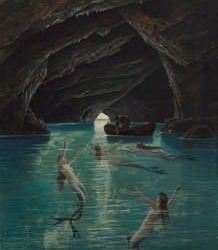
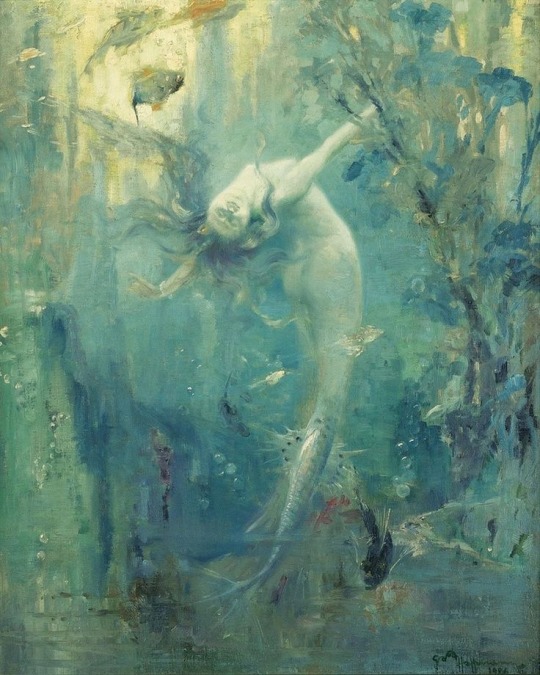
I sometimes wonder
who I used to be before
pains of growing up
blinded me from my true light
in these dark oceans
coming to terms with living
sorrow in my heart
can’t seem to dissolve with time
what’s in store for me
even if I keep going
blurry misty eyes
nobody ever told me
I would feel this way
as I turn to adulthood
sigh, I’ve forgotten…
when did I become a grown-up
why does adolescence hurt this much
Chōka
長い歌
#poetry#poem#short poem#poems and poetry#japanese literature#english literature#literature#spilled thoughts#spilled words#spilled poetry#writblr#writerslife#writerscommunity#undine#mermaid#blue aesthetic#moon poetry#youth#growing up#Punk Panda Sentimentality
39 notes
·
View notes
Text

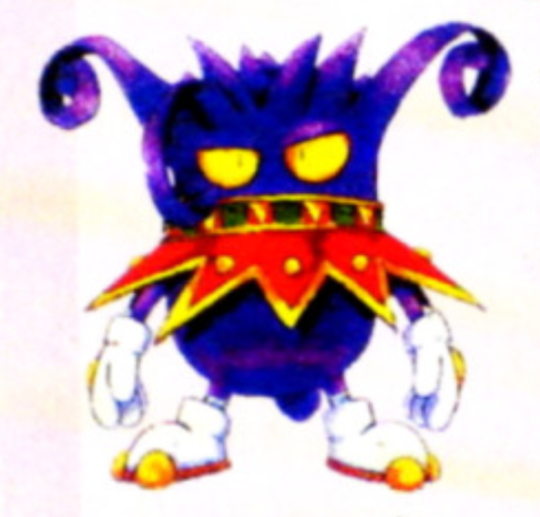
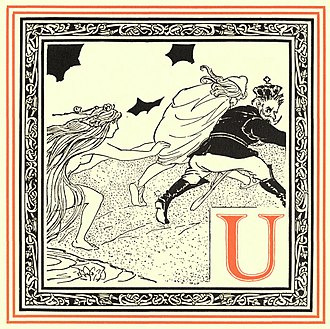
Undine is of course a classic water spirit in broadly european lore. Associated with the alchemical element of water, with salamander(fire), gnome(earth), and sylph(air) rounding out the quartet. Frequently just a beautiful young woman, they're sometimes considered a broader encompassing category of water nymph that includes other creatures like mermaids.
No idea why Wild Arms 2's Undine looks like none of that... Also the Japanese did just call it Undine, and for some reason the English threw an -s onto the end? Strange that this is its only real appearance in the whole franchise when it's such a default staple of other fantasy and alchemy inspired franchises.
4 notes
·
View notes
Note
Hello, those of the Precise Museum! Who's your favourite quest exclusive character?
Ingu: Silvie and the rest of the love messengers, Marvett, and Dalida
Cove: Rozatte is my ultimate wife. I also like Ryatafu and Comone. And for series in general with ultimate faves in parentheses… the Parascience Institute (Nyevus, Mckenna, and Uldoradd), the Stellar mages (Rufus and Nasos), the Sages (Galatea and Dalida), the Warlocks (Richard and Miriam), the Tidal Roar Knights (Korallia and Istio), and the Dark and Light Academy angels (Patri and Ciel). I don't play PPQ anymore personally but I was a regular player for years and I remember playing it way before multiquests were even a thing... so I picked up a lot of faves haha.
Neni: My favorites are Floré, the entire Space Time Detective Agency and Zero&Eight. :-)
Vic: dream couriers, kigurumi, sages, stellar mages, cleaner boys, doctors, assisstant… probably some others. more specific characters though: zenon, pengurumi, draude iii, nasos, nukahokkori, tanya, marte… yeah there's def more but this is long enough as is. also low-high forever (dalida zenon wacht).
Luna: My favorite quest character is HILDA my beautiful wife who I've been married to for coming up on 6 years <3 all of the accursed knights are really special to me and have been living in my head rent free since I started quest in 2017. if I had to pick a second favorite it would be Crowlas since it feels like they designed him just for me lol. I have a lot of other faves but some of the biggest ones are pollux, hachi/eight, eriaski, and dalida & galatea (do not separate them)
Saetta: I dislike quest! but I guess atari and seo. the rest is too much
Pieniondz: For me Questies are simply a bunch of PNGs, although that may be because not only I haven't seriously played the game for years, but also because I can't read Japanese. I just nuked everything with Rafisol until endgame lol.
As for a legit answer… does Paprisu count?
Armando: I like undine
The design is cute and she starts as a blob
And Res' list is under the read more.
Res:
Albert
Richard
*Matthew
Miriam
Sullivan
Rozatte
Outlander Albert
Outlander Richard
Outlander Matthew
Outlander Miriam
Outlander Sullivan
Tilura
Marvett
Rozema
*Bestoll
Algar
Rita
Marte
Cindy
*Felix
Agathe
Mars
Yuri
Hartmann
Emilia
Viola
*Legamunt
Hilda
Eldur
Friede
Wacht
Mappela
Crowlas
*Legamünt
Edgar
Patri
Maurice
Yuanjiao
Severio
Byakko
Matakichi
Chamali
Sada
Hamal
Sabik
Dini
Dugtt
Nyaordo
Subamaru
Uldoradd
Roquier
Hachi
4 notes
·
View notes
Link
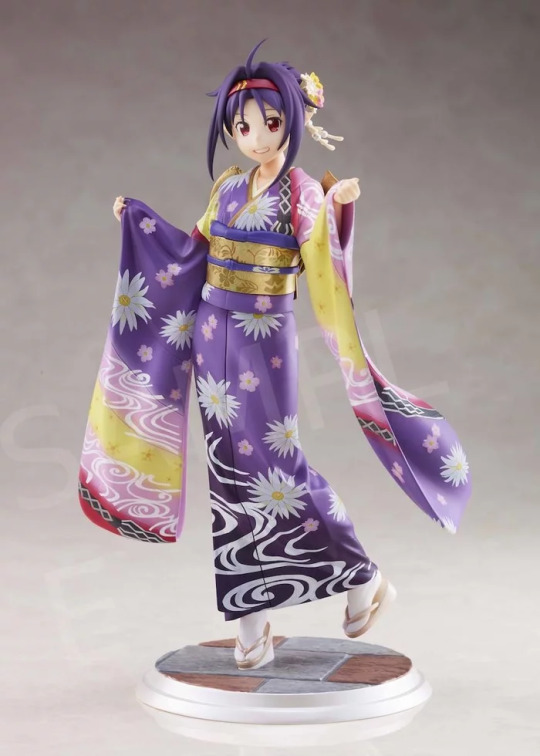
APRIL 2023
0 notes
Text
Tales of phantasia strategy guide
TALES OF PHANTASIA STRATEGY GUIDE >> DOWNLOAD LINK
vk.cc/c7jKeU
TALES OF PHANTASIA STRATEGY GUIDE >> READ ONLINE
bit.do/fSmfG
tales of phantasia undine
tales of phantasia gba secrets
tales of phantasia tips
tales of phantasia mausoleumtales of phantasia how to use skills
tales of phantasia morlia mineshaft walkthrough
tales of phantasia controls
Tales Of Phantasia Shrine - Your source for info on this SNES classic. The original walkthrough was done by Luke Drelick, but has been heavily doctored This page here will share minor tidbits, tricks, cheats and hints about Tales of Phantasia. As with many of the other guides on my website these are 2.99 2.39 Elize's Mint Costume Elize's Santa Costume Elize dresses the part as Mint Adenade from Tales of Phantasia! Wear it to change the music in battle.Tales of Phantasia PSX Guide - Free ebook download as PDF File (.pdf), A: Unfortunately, there isn't a foolproof strategy for getting the crab to. Tales of Phantasia begins by showing a heroic battle between four unknown warriors against an evil sorcerer, Dhaos, the outcome of which changed the fate of the I picked up Tales of Phantasia a couple days after it came out, a chest or give me strategies for bosses, as they won't be making it into the guide. Tales of Phantasia Official Strategy Guide Vol. 2 (Japanese Import) [Namco] on Amazon.com. *FREE* shipping on qualifying offers. Tales of Phantasia Official Tales of Phantasia Strategy Guide - Chapter XXXIII - and music. Baten Kaitos II - Le Ali Del Principio It's sort of like Shadow of the Moon on the Water's Video Game Name: TALES OF PHANTASIA ; Book: TALES OF PHANTASIA ; Language: Japanese ; Modified Item: No ; Type: Strategy guide book.
https://www.tumblr.com/kimemurame/696635935039815680/graphpad-prism-8-user-guide, https://www.tumblr.com/kimemurame/696635935039815680/graphpad-prism-8-user-guide, https://www.tumblr.com/kimemurame/696635935039815680/graphpad-prism-8-user-guide, https://www.tumblr.com/kimemurame/696635935039815680/graphpad-prism-8-user-guide, https://www.tumblr.com/kimemurame/696635935039815680/graphpad-prism-8-user-guide.
0 notes